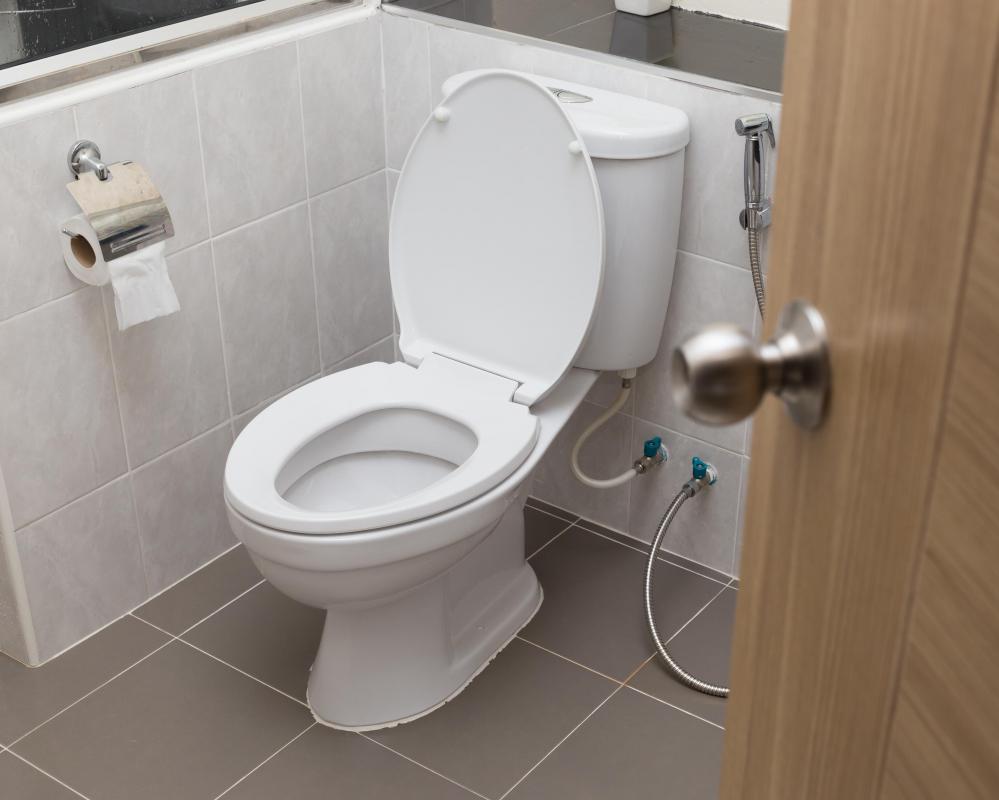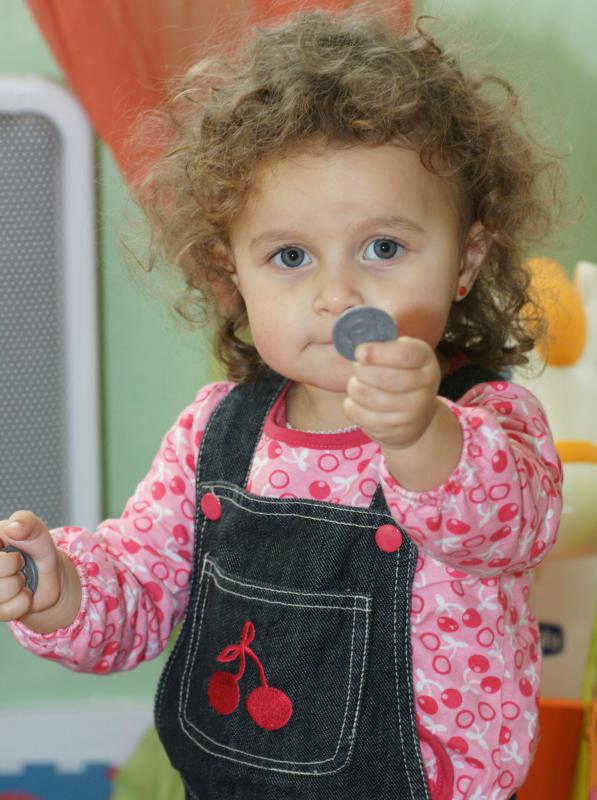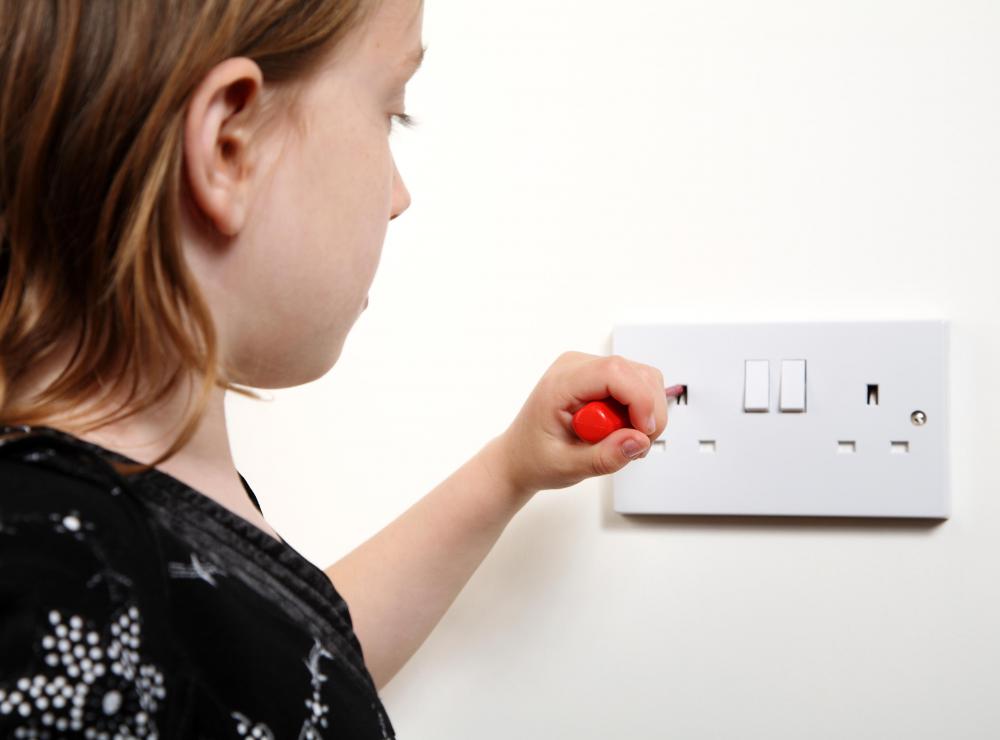At WiseGEEK, we're committed to delivering accurate, trustworthy information. Our expert-authored content is rigorously fact-checked and sourced from credible authorities. Discover how we uphold the highest standards in providing you with reliable knowledge.
What is Childproofing?
Childproofing your home means you're making it safe for young children. A very small child doesn't yet know that small items present a choking hazard or an electrical socket can cause a shock. It's up to you to make sure no attractive dangers are available to your young children. Once a child begins to crawl, it's time to begin childproofing.
What are some of the areas in which you should concern yourself when childproofing? Electrical sockets are an important consideration. A young child isn't aware of the hidden danger, only that the small holes in the socket look like great spots in which to poke tiny fingers. Many stores now carry plastic childproofing plugs that can be placed inside electrical sockets to keep out probing fingers. You'll want to purchase one of these for every socket in your home —- no matter where it might be located.

Cabinets are another area that shouldn't be overlooked when childproofing. Unless your lower cabinets yield items like plastic containers or pots and pans, it's imperative you put cabinet locks on the inside. Cabinet locks are easy to use and easy to install. For a young child however, they are difficult to open. Cabinet locks are especially necessary for cabinets that hold chemicals, cleaning products and food. Remember, while food is not toxic, the pieces might be too big and present a choking hazard.
You'll also want to install childproofing oven and toilet seat locks. Believe it or not, a toddler can open an oven or even fall into a toilet! It's best to buy simple plastic locks to keep these items shut.

When childproofing, the best way to find out what your young child can get into is to bring yourself down to her level. Crawl along the floor and make a note of what you see. Are there books she can tear apart or drawers she can open? Are there air conditioning or heating vents where her fingers can get stuck? These are things you'll need to deal with sooner rather than later.

Much to the dismay of the avid collector, childproofing also means putting away, or at least putting up, the knick knacks. Anything that can be pulled down on your child presents a danger. When childproofing, make a thorough sweep of your home and secure any potential hazards. If you're unsure of what to look for, your physician is sure to have literature to guide you along. When it comes to your children, it's always better to be safe than sorry.
AS FEATURED ON:
AS FEATURED ON:













Discussion Comments
@EdRick - There are childproofing products that can help with all your problems! Actually, for under your desk, you might not even need specific child items. You need cord covers, the kind that stick to the wall, to contain the cords themselves. Then you need either a wire basket or a special surge protector cover, either of which can be mounted to the wall so baby can't pull it down. Bonus: it is much tidier-looking as well as safer!
For the outlets, you need a box-shaped outlet cover. They are not cheap and kind of a pain to install; you have to remove the outlet plate and you might also need to buy a longer screw. But the cover will then fit over the whole outlet so baby can't unplug anything. (A hinged door allows you to open it up if you need to plug or unplug something.)
And for bookcases, I just pack the books in so tight that baby can't pull them off! I also got safety straps to attack the bookcases to wall studs so baby can't pull them over.
@jonnyjo - Anything nontoxic. You can do some research and shop around online. You are wise to be thinking about "childproofing" in terms of exposure to potentially toxic chemicals as well as physical safety.
I'm finding myself at a bit of a loss about two specific problems with childproofing a home. The first i the tangle of wires under my desk. How do I keep my daughter from pulling on them and unplugging everything?
And the other is, what about outlets that are in use? What's to stop her from pulling out the plug and sticking her fingers or toys into the now-empty socket? What kind of product do I need for that?
Don't even get me started on the bookcases. I've almost resigned myself to just packing up all my books in boxes.
what are some paints to use on children's toys?
Post your comments